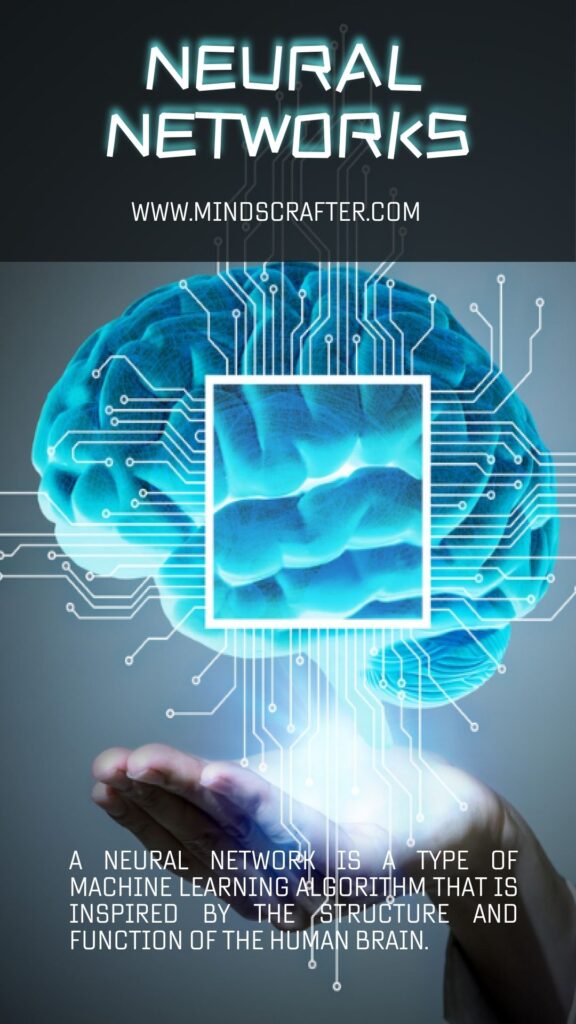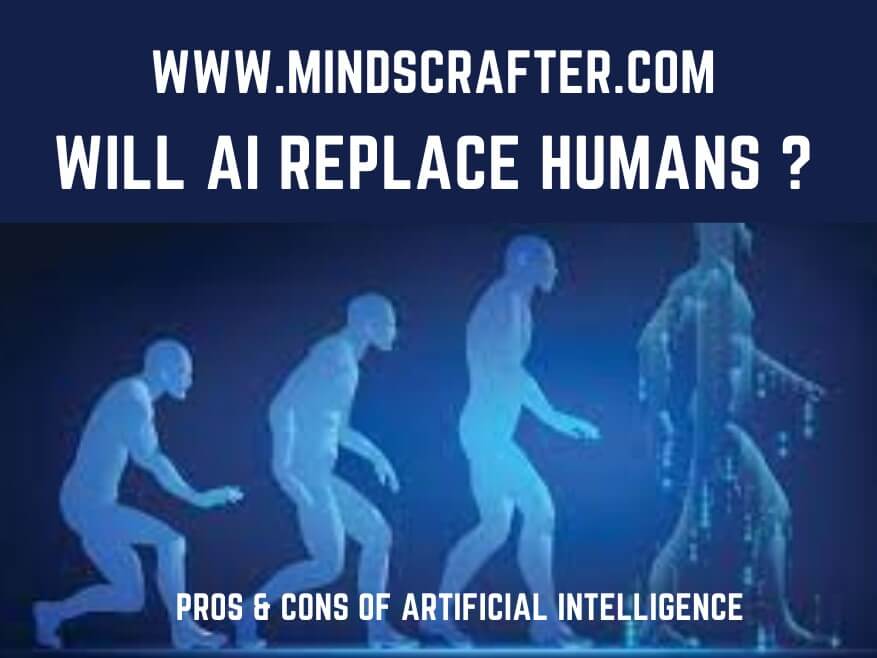From Brain to Machine: The Basics of Neural Networks in AI:
The world of Artificial Intelligence (AI) has been rapidly evolving over the past few years, and one of the most intriguing developments has been in the field of neural networks. These networks are based on the human brain’s structure and function and can revolutionize how we interact with technology. Neural networks have already been used for various applications, from image recognition to natural language processing. Their potential for use in various other fields is only beginning to be explored. This article will take a closer look at the basics of neural networks in AI, exploring how they work, their potential applications, and how they are changing the way we think about technology. Whether you’re a tech enthusiast or just curious about the latest developments in AI, this article will provide you with a fascinating glimpse into the future of technology.
What is a neural network?
Generally, a neural network is a type of machine learning algorithm that is based on the structure and function of the human brain. It consists of a large number of interconnected processing nodes, which are similar to neurons in the brain. These nodes are organized into layers, each performing a specific function in processing data. The basic idea behind a neural network is to take a large amount of data as input and use it to train the network to recognize patterns or make predictions. The network does this by adjusting the weights and biases of its nodes in response to the input data. Various applications utilize neural networks, including image and speech recognition, natural language processing, and predictive analytics. Hence, artificial neural networks attempt to solve complicated problems, like summarizing documents or recognizing faces, with greater accuracy.
How do neural network work?
Neural networks work by taking in a large amount of data and using it to train the network to recognize patterns or make predictions. The network does this by adjusting the weights and biases of its nodes in response to the input data. Furthermore, typically, we split the input data into two sets: a training set and a testing set. We adjust the weights and biases of the nodes using the training set, and we evaluate the performance of the network using the testing set.
The process of training a neural network typically involves several iterations, during which the network adjusts its weights and biases in response to the input data. This process continues until the network can accurately recognize patterns or make predictions based on the input data.
Types of neural networks – feedforward, recurrent, and convolutional:
There are several types of neural networks, each of which is suited to different types of applications. Three of the most common types of neural networks are feedforward, recurrent, and convolutional.
**Feedforward Neural Network**
The simplest type of neural network is the feedforward neural network, which comprises a single layer of processing nodes connected to the input data. These networks find common application in straightforward classification tasks, like recognizing handwritten digits or identifying objects in images.
**Recurrent Neural Network**
Feedforward networks are simpler than recurrent networks and are used for tasks that don’t require the network to remember past inputs. Recurrent networks, on the other hand, are more complex and find application in tasks that necessitate remembering past inputs. They excel in speech recognition and language translation tasks.
**Convolutional Neural Network**
Designers create convolutional neural networks specifically for image and video recognition tasks. These networks excel at recognizing image patterns and identifying objects by analyzing their shape and color.
Applications of neural networks in AI – image recognition, natural language processing, and more:
Neural networks have a wide range of applications in AI, including image recognition, natural language processing, and predictive analytics. Some of the most exciting applications of neural networks include:
**Image Recognition**
Various image recognition tasks make use of neural networks, ranging from identifying faces in photographs to recognizing objects in satellite imagery. Among these tasks, convolutional neural networks are especially suitable. They excel at recognizing image patterns and identifying objects by analyzing their shape and color.
**Natural Language Processing**
Neural networks play a crucial role in our implementation of natural language processing tasks, such as speech recognition and language translation. In particular, we find recurrent neural networks to be highly suitable for these tasks. They possess the ability to remember past inputs and utilize this information to predict future inputs.
**Predictive Analytics**
We utilize neural networks for a variety of predictive analytics tasks, including predicting stock prices or customer behavior. Moreover, these networks can recognize patterns in large amounts of data and use this information to predict future trends.
Advantages and Disadvantages of neural networks in AI:
Neural networks have several advantages and disadvantages when used in AI applications.
**Advantages**
One of the most significant advantages of neural networks is their ability to learn from large amounts of data. They can recognize patterns and make predictions based on this data, which makes them well-suited to tasks such as image recognition and predictive analytics.
Neural networks are also highly adaptable and can be used for a wide range of applications. They can adjust their weights and biases in response to new data, which makes them well-suited to tasks that require the network to learn and adapt over time.
**Disadvantages**
One of the most significant disadvantages of neural networks is their complexity. They can be challenging to design and implement and require large amounts of data to train effectively. Additionally, they can be prone to overfitting, which can lead to inaccurate predictions.
Another disadvantage of neural networks is their need for more transparency. Because they are designed to learn from large amounts of data, it can be difficult to understand how they arrived at a particular prediction or decision.
Training a neural network – supervised and unsupervised learning:
Training a neural network typically involves two types of learning: supervised and unsupervised.
**Supervised Learning**
Supervised learning involves training the network on a set of labelled data. Further, input data, along with the correct output, is provided to the web. In response to the input data, we adjust its weights and biases to minimize the difference between the predicted and correct outputs.
**Unsupervised Learning**
Unsupervised learning involves training the network on a set of unlabeled data. Further, we provide the web with input data that lacks any corresponding output. In response to the input data, we adjust its weights and biases to identify patterns or structures within the data.
Popular neural network frameworks – TensorFlow, Keras, and PyTorch:
Developers and trainers utilize several popular neural network frameworks, including TensorFlow, Keras, and PyTorch, to build and train neural networks.
**TensorFlow**
Google developed TensorFlow, an open-source software library utilized for creating and training neural networks. It is one of the most popular neural network frameworks, and researchers and developers around the world use it.
**Keras**
Keras is a high-level neural network API that is written in Python. It is designed to be easy to use and allows developers to build and train neural networks quickly.
**PyTorch**
PyTorch is an open-source machine-learning library developed by Facebook. It is used for creating and training neural networks and is particularly well-suited to tasks requiring high flexibility.
Limitations and Challenges of neural networks in AI:
Despite their many advantages, neural networks also have several limitations and challenges when used in AI applications.
One of the biggest challenges is the need for large amounts of data to train the network effectively. This can be particularly challenging for tasks requiring high accuracy, such as medical diagnosis or autonomous driving.
Another challenge is the need for more transparency in neural networks. Because they are designed to learn from large amounts of data, it can take time to understand how they arrived at a particular prediction or decision.
Future of neural networks in AI:
The future of neural networks in AI shines brightly, with new developments and applications being discovered on a daily basis. Furthermore, as the technology progresses, neural networks are poised to find utility in a wide array of fields, ranging from healthcare to transportation.
A particularly exciting advancement in neural networks is the rise of deep learning. This approach entails the utilization of large, layered neural networks to recognize patterns and make predictions. Deep learning has already demonstrated its efficacy in various domains, including image and speech recognition as well as autonomous driving.
As the technology continues its evolution, we anticipate neural networks to be leveraged for increasingly intricate and demanding tasks, such as real-time decision-making and natural language understanding.
Conclusion:
In conclusion, neural networks stand as a captivating and formidable technology with the potential to revolutionize our interaction with technology. Whether one is a tech enthusiast or simply curious about the latest advancements in AI, grasping the fundamentals of neural networks becomes essential. From image recognition to natural language processing, neural networks have already found application in diverse domains. Moreover, researchers and experts are only beginning to explore the potential of neural networks in other fields. With daily discoveries of new developments and applications, the future of neural networks in AI serves as an inspiration.



